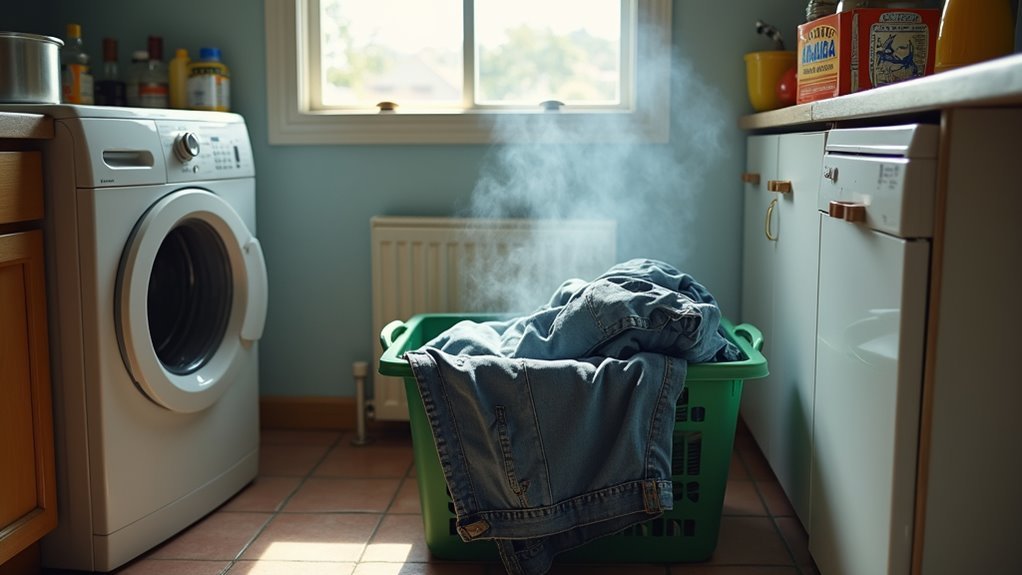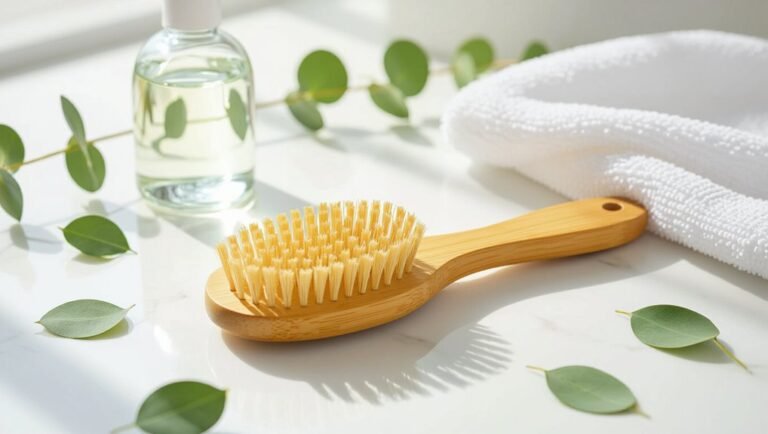We’ve all found amazing deals at thrift stores, only to get home and think, “Why does this smell funny?” Cleaning used clothes isn’t just about making them smell better – it’s about making them feel like they’re really yours. While many people just throw their thrift store finds into the washer, different types of clothes and smells need different cleaning methods.
According to Patric Richardson, also known as “The Laundry Evangelist,” “The biggest mistake people make with secondhand clothes is not giving them a proper first cleaning. A good soak in warm water with gentle detergent can solve most issues.”
Think of cleaning thrift store clothes like giving your “new” clothes a fresh start. Let’s look at ways to turn those musty old treasures into clothes you’ll love wearing.
That Thrift Store Smell

Why does nearly every thrift store have that unmistakable smell? It’s actually a complex mix of several elements. Mold and mildew from damp storage, aging fabric fibers breaking down, and those strong mothball chemicals all contribute. We’re also smelling the previous owners’ lives – perfumes, smoke, and detergents that have embedded into the fibers. Most stores try masking these with air fresheners, but they rarely eliminate the source. Proper cleaning techniques are essential for maintaining the integrity of thrift store finds.
##
Let’s talk about how to properly clean those thrift store treasures we all love finding.
I think we should cover both the essential steps to follow and the common mistakes to avoid, as knowing what not to do is just as important as knowing the right techniques.
We’ll walk through a simple process that’ll help you transform secondhand clothes into like-new items that feel fresh and clean in your wardrobe. Remember, regular cleaning with a soft cloth can help maintain the quality of your thrifted finds, just like it does for leather jackets.
Things to Do When Cleaning thrift store clothes
Thrift store clothes can be a treasure trove of unique finds, but they often require thorough cleaning before being added to your wardrobe.
Proper cleaning removes previous owners’ residues, eliminates odors, and guarantees hygiene while preserving the garment’s quality and extending its life.
With the right approach, you can transform secondhand items into fresh, clean additions to your closet, making your thrifty purchases truly worthwhile investments.
- Check care labels first – Identify fabric type and washing instructions to prevent damage and determine the appropriate cleaning method for each garment.
- Pre-treat with vinegar soak – Mix one part white vinegar with four parts water and soak clothes for 30-60 minutes to break down stubborn odors and stains.
- Machine wash appropriately – Use high-quality detergent and the warmest water temperature allowed by the care label, adding an extra rinse cycle for thorough cleaning.
- Hand wash delicates – Submerge silk, vintage, or fragile items in cool water with a teaspoon of laundry soap, gently agitating and rinsing thoroughly.
- Steam clean fragile fabrics – For lace or cashmere, run a dryer cycle with ice cubes wrapped in cloth on low heat, then steam with distilled water to eliminate odors and wrinkles.
- Dry thoroughly and promptly – Machine dry at 140°F if fabric allows to kill germs, or air dry flat on a rack to preserve the garment’s shape and prevent shrinkage.
- Avoid excess soap – Use just enough detergent to clean without leaving residue that can cause skin irritation and buildup on fabrics.
Things to Avoid When Cleaning thrift store clothes
When cleaning thrift store clothes, it’s important to take special precautions to preserve their condition and extend their lifespan.
Second-hand garments may have unknown histories, previous wear patterns, or delicate features that require gentler treatment than brand-new items.
Proper cleaning techniques will help maintain the unique character of vintage finds while ensuring they’re fresh and ready to wear.
- Using excessive laundry detergent – Creates buildup on fabrics that can irritate skin and prevent proper cleaning, particularly problematic for thrift items that may already have residue from previous owners.
- Machine washing “dry-clean only” items – Causes irreversible damage to vintage clothing including shrinking, color fading, and weakened fabric structure that can destroy your thrift store find.
- Applying bleach – Leads to fading, fiber weakening, and color damage that can ruin the appearance and integrity of second-hand clothes that may already have delicate coloration.
- Using water temperatures higher than recommended – Sets stains instead of removing them, causes shrinkage in natural fibers, and accelerates breakdown in already-worn thrift store fabrics.
- Skipping spot tests – Failing to test cleaning solutions on inconspicuous areas can result in permanent discoloration or damage, especially on delicate thrift store items made of silk or rayon.
Steps
Thrift store clothing can be an excellent way to build your wardrobe affordably while being environmentally conscious, but proper cleaning is essential to make sure these pre-owned items are fresh and sanitary before adding them to your closet.
Thrifted garments often carry musty odors, invisible residues from previous owners, or even traces of perfumes and chemicals that can cause skin irritation.
The cleaning process requires multiple targeted steps to effectively remove these unwanted elements while preserving the condition of your new-to-you treasures.
Step 1: Check the care label on your thrifted clothing item to make sure proper handling.
Step 2: Air out the garment in fresh air for several hours to release initial odors.
Step 3: Run a first wash cycle with one cup of white vinegar in warm water (no detergent).
Step 4: Complete a second cycle using half a cup of baking soda in warm water.
Step 5: Wash the clothing a third time with Heritage Park Activewear Laundry Detergent on regular/permanent press setting in warm water.
Step 6: Air dry the cleaned items flat on a drying rack to maintain their shape and condition.
Final Thoughts
Although the process may seem involved, we’ve found that properly cleaning thrifted clothing is absolutely worth the effort.
You’re not just saving money, you’re reducing waste and choosing sustainability.
We think there’s something special about breathing new life into pre-loved items.
With these cleaning methods, your thrifted treasures will be fresh, sanitary, and ready to become cherished parts of your wardrobe.
##

Properly cleaning thrift store clothes doesn’t have to be intimidating once you understand the simple, effective techniques.
The vinegar pre-treatment serves as your first line of defense against mystery odors and stains, while proper washing techniques—whether machine or hand washing—ensure your secondhand treasures are thoroughly cleaned.
A vinegar soak works magic on thrift finds, eliminating mystery odors while proper washing restores forgotten treasures to their former glory.
Baking soda treatments provide that extra level of odor neutralization, and careful drying methods help preserve the quality of your finds. Additionally, using natural cleaning methods can enhance the freshness of your purchases without harsh chemicals.
Remember that thrift shopping isn’t just budget-friendly—it’s environmentally conscious and offers unique style opportunities.
With these cleaning methods in your arsenal, you can confidently browse those racks knowing any item can be refreshed and made like new again.
Don’t let concerns about cleanliness deter you from the thrill of the hunt.
Your next favorite garment is waiting at the thrift store, and now you have all the tools to make it perfectly yours. Happy thrifting!






